Posted on June 26, 2024
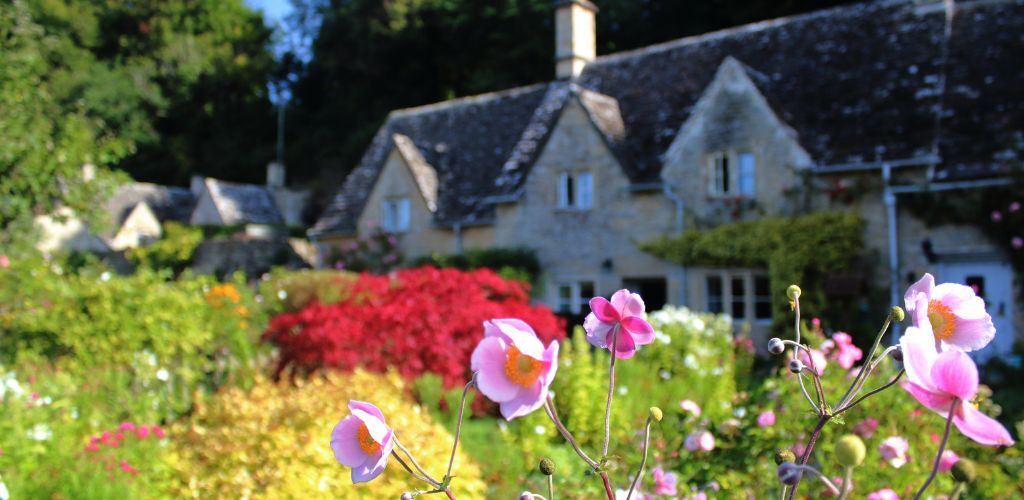
Exploring the enchanting gardens of The Cotswolds during the summer is a delightful journey through vibrant colours and horticultural charm. The gardens all across The Cotswolds really come alive with an array of beautifully manicured gardens that showcase the peak of summer blooms and lush greenery. Whether you're an avid gardener or simply love to bask in serene settings, the gardens of these gardens offer a picturesque escape filled with radiant flowers, tranquil water features, and timeless elegance. You’ll want to add these garden spots to your summer itinerary!
Batsford Arboretum

Situated in the lovely Moreton-in-Marsh, Batsford Arboretum is home to 56 acres of plants from all around the world. With over 2,850 labelled specimens of trees, shrubs and bamboo, the arboretum was developed by Algernon Bertram Freeman-Mitford in 1886. His travels throughout Asia inspired the Chinese and Japanese influence to the garden which is still apparent today, and February is a wonderful time to visit to see the display of snowdrops as they start to bloom.
Batsford is operating a time ticketing system which must be booked online prior to visiting. Find out more on their website here.
Hidcote

Hidcote is home to an arts and crafts-inspired garden with carefully designed outdoor spaces in the north of the rolling Cotswold hills. Created by the talented American horticulturist, Major Lawrence Johnston, a visit to Hidcote is wholly unique with its colourful and intricately designed outdoor ‘rooms’ to explore.
You can either meander through the secret gardens, magnificent vistas and plants bursting with colour or take to the wilderness by walking through the secluded stretch of tall trees as the gardens blend into the countryside.
All visits to Hidcote must be booked in advance on the National Trust website.
Painswick Rococco Gardens
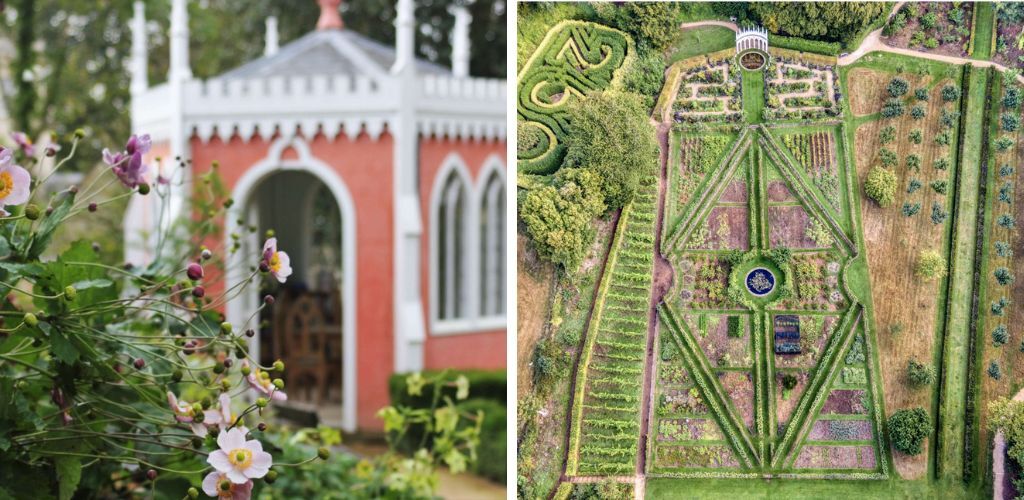
Experience the great outdoors, with a peek into the flamboyant frivolity of the early 1700s in the UK’s only complete rococo garden. The word ‘rococo’ describes a period of art in Europe in the 1700s, characterised by ornamental decoration, pastel colours and asymmetry. In England, the upper middle class of the 1700s loved to show off their wealth by indulging in anything deemed flamboyant and frivolous, and their gardens became an elaborate wonderland where they entertained and partied.
From magical follies and a hidden valley to breathtaking views of The Cotswolds and woodland walks, there’s plenty to take in as you get in your steps for the day.
Painswick Rococco Gardens will be open from the 16th January for local exercise at the weekends only by advance booking. Click here for more information.
Westonbirt, National Arboretum
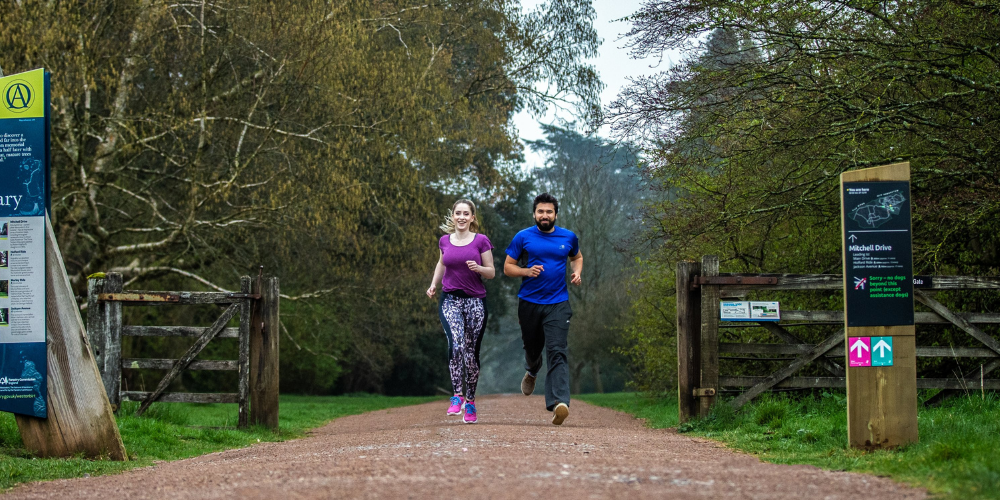
Westonbirt is home to one of the most beautiful and important plant collections in the world. With 15,000 specimens, and 2,500 species of tree from all over the world, the arboretum plays a vital part in research and conservation.
There are plenty of accessible trail options for those that need gentle, paved routes, and for those who like to run, Westonbirt have also created running routes. The marked running trails take away the guesswork of knowing where to run so you can confidently hit the trails and enjoy all the benefits of being active outdoors.
All visits to Westonbirt must be pre-booked in advance and you can do this on their website here.
Rousham House & Garden

One of England's most important gardens, Rousham represents the first phase of English landscape design and remains almost as its designer William Kent (1685–1748) left it. Many of the features that delighted its 18th century visitors are still there for visitors today, such as the ponds, the Cold Bath and a sham ruin known as the ‘Eyecatcher’.
Don’t miss the walled garden with its herbaceous borders, small parterre, pigeon house and espalier apple trees. You can also spot the herd of rare Long-Horn cattle in the park.
There’s no need to book in advance, just turn up with a comfortable pair of shoes. The ticket machine can take both cash and contactless card payments. Find out more over on their website.
Croome

The Croome estate is rich in history dating back to the 16th century, and it was also used in World War Two as a secret wartime airbase. Its parkland has plenty of space to roam and wildlife to spot, from its serpentine river to the commanding views over the Malverns and elegant gardens. The parkland has dog-friendly routes if you need somewhere with lots of space to take your dog out for boundless exercise.
All visits to Croome must be booked in advance on the National Trust website.
Kiftsgate Court Gardens
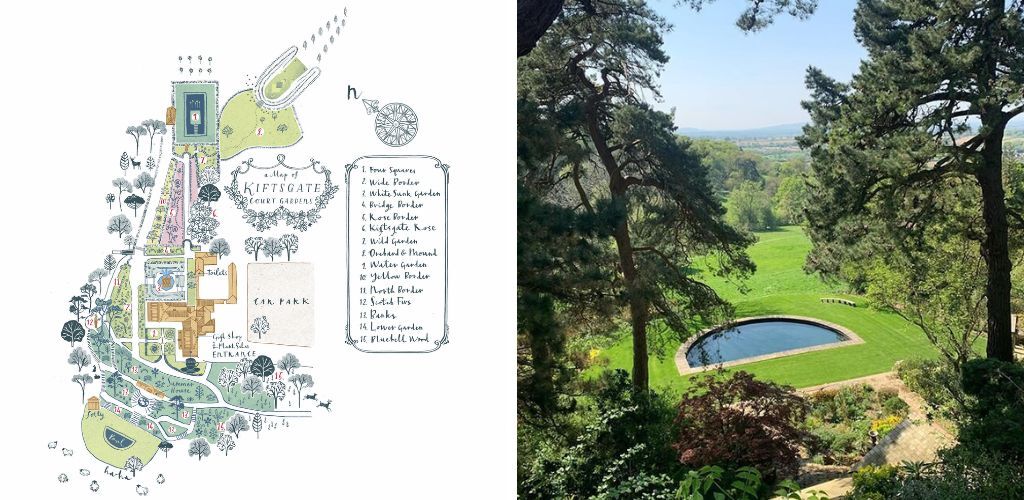
Kiftsgate Court Gardens, located near Chipping Campden in Gloucestershire, is the proud work of three generations of women gardeners. This enchanting garden has a unique plant collection and a breathtaking design, particularly the world-famous Kiftsgate rose, which Kiftsgate claims to be the largest of its kind in England. With a terraced layout which descends from the main house, each level offers a variety of aesthetic displays and an array of plantings that change with the seasons.
You can find out more about Kiftsgate here.
Barnsley House Gardens
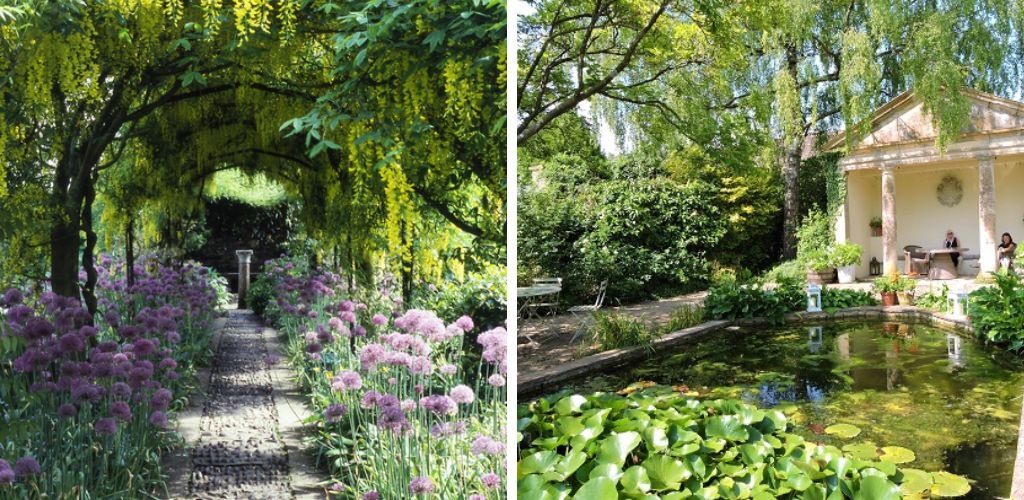
Barnsley House Gardens, situated near Cirencester, is the brainchild of the celebrated gardener Rosemary Verey. Besides the stunning array of colours, guests can walk through the precision made formal knot garden or become enchanted by the Laburnum Walk, which bursts into a tunnel of golden blooms in late spring. There’s a vegetable garden which offers a fantastic example of how practical spaces can also be visually stunning, featuring a variety of edible plants arranged in aesthetically pleasing patterns.
You can find out more about the gardens and how to visit here.